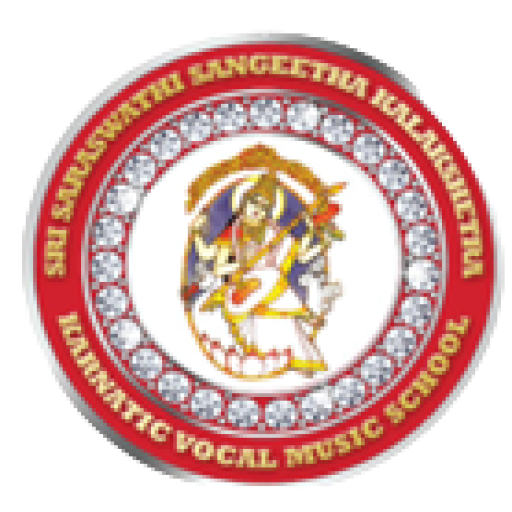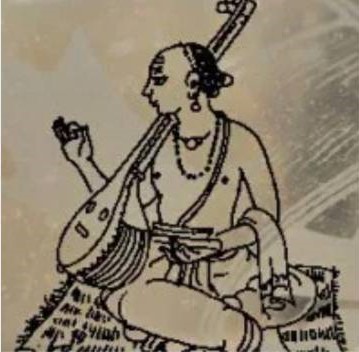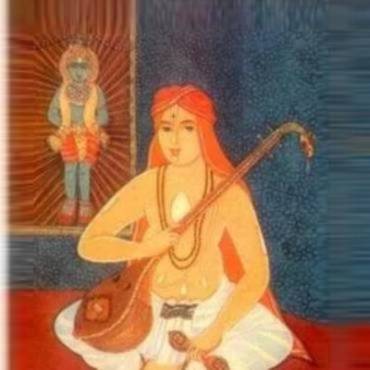The SSK Intermediate classes serve as a crucial bridge between the foundational basics and more intermediate aspects of Karnatic music. Through the combination of Pillari Geetams, swarams, sahityam, and a diverse range of ragas, students in the Intermediate classes continue their musical journey with enriched knowledge and skills, paving the way for further growth and exploration in the realm of Karnatic music.
In the intermediate level SSK (South Indian Music) classes, students are provided with training in Geethams, which are short and simple compositions in Karnatic music. Geethams play a crucial role in introducing students to fundamental concepts such as ragas (melodic modes), talas (rhythmic patterns), and swaras (musical notes). By practicing Geethams, students develop their understanding of these elements and refine their vocal abilities.
Geethams are typically sung at a slow tempo, allowing students to focus on perfecting their diction, pronunciation, and voice culture. This deliberate emphasis on clarity helps students articulate the lyrics and musical phrases accurately, enhancing their overall performance skills. Through Geethams, students gain a solid foundation in the art of expression and melodic improvisation.
In addition to singing Geethams individually, students in this class also learn to perform them with accompaniment on the mridangam, a traditional South Indian percussion instrument. This collaborative aspect enables students to understand the rhythmic intricacies and dynamics of performing Geethams in a group setting. They learn to synchronize their singing with the rhythmic patterns of the mridangam, creating a harmonious musical ensemble.
Overall, Geethams play a vital role in the intermediate level SSK classes, serving as stepping stones for students to advance their knowledge and skills in Karnatic music. Through these compositions, students develop a deeper appreciation for the intricate nuances of ragas, talas, and swaras, while also refining their vocal abilities and gaining experience in collaborative musical performances.
To pursue intermediate-level training in Carnatic music, it is generally expected that students have acquired certain prerequisites and foundational skills.
Basic Knowledge of Swaras: Students should have a solid understanding of the seven basic swaras (sa, ri, ga, ma, pa, dha, ni) and their variations in different octaves. They should be able to identify and sing these swaras accurately.
Familiarity with Sarali Varisai: Sarali Varisai, also known as the basic exercises, form the foundation of Carnatic music. Students should have learned and practiced these exercises, which involve ascending and descending patterns of swaras in different speeds and rhythms.
Basic Understanding of Tala: Tala refers to the rhythmic aspect of Carnatic music. Students should have a basic understanding of commonly used talas like Adi Tala (8 beats) and Rupaka Tala (6 beats). They should be able to maintain a steady rhythm and follow basic tala patterns.
Introduction to Ragas: Students should have been introduced to some fundamental ragas, such as Mayamalavagowla, Mohanam, and Sankarabharanam. They should have a basic understanding of the unique characteristics and melodic patterns associated with these ragas.
Voice Culture: A good command over voice modulation, breath control, and basic techniques like gamakas (graceful oscillations) and meend (glides) is essential. Students should have worked on improving their vocal range, clarity, and tonal quality.
Basic Notation Reading: While not mandatory, having some familiarity with the Carnatic music notation system (Swaras and rhythmic notation) can be beneficial at the intermediate level. This allows students to follow and practice compositions using notation.
Pillari Geethams (6): These songs, written by Sri Purandara Dasa, are the initial compositions that students begin with. They pay homage to Lord Vigneshwara. Though all six songs are considered Pillari Geethams, the first two specifically reference Lord Vigneshwara. Following these, students learn compositions by Pydala Gurumurthy Sastry, a renowned composer of Karnatic music known for his melodious and simple compositions.
Geethams: These are simple songs that are more complex than the swarams covered in previous lessons. Geethams enable students to appreciate different Ragams (melodic modes) and develop their voice for smooth maneuvering over various swarams.
Sadharana Geethams (11): Also known as Sanchara Geethams, these compositions are written in popular ragams such as Mohan, Kalyani, Begeda, Sankarabharanam, and Anandabharavi.
Ghana Raga Geethams (6): These compositions feature majestic ragams like Nata, Goula, Arabhi, Varali, and Sreeragam.
Lakshana Geethams (2): As the name suggests, these Geethams provide insights into the characteristics (Lakshana) of the ragam.
Swara Pallavis (3): These compositions serve as the most complex stepping-stones for learning varnams. Swara Pallavis, also known as Jathiswarams when including Jathis (rhythmic patterns), consist solely of swarams or musical notes without lyrics (sahithyam).
Swara Jathis (3): Similar to Swara Pallavis, these compositions are complex and include both swarams and sahithyam (lyrics).
Ragamalika: Level-based compositions are taught, applying the ragas covered in Geethams, to deepen the understanding and strengthen the foundation at the intermediate level. Students are exposed to compositions by various renowned composers, including Purandaradasa, Thyagaraja, Dikshitar, Annamacharya, Papanasam Sivan, and others.
Objectives
- Develop a strong foundation in advanced learning and the creative aspects of music through Geethams.
- Diligently practice and learn Geethams, which are significant forms in Carnatic music.
- Introduce keerthanas and kritis in the ragams learned through Geethams to enhance the understanding of ragam as a whole and its application.
Learning Outcomes: By the end of the intermediate level, students should be able to:
- Sing Geethams in various ragams at three different speeds.
- Sing the keerthanams and krithis taught so far.
- Identify the ragam when notes are sung.
At what age can I start classes for my kids?
Do you take a trial class?
Is it usually a group class or an one-on-one class?
What languages are these bhajans?
Do you work to improve students' pronunciation?
Is it practical for a parent and kid to be a student at the same time?
Can a Beginner participate in Events conducted by the school?
Is there an extra charge for access to Google Classroom?
Is it necessary to have accompaniment on a percussion instrument like tabla or mridangam at Beginner level?
Book an Orientation
SSK School Year ( Sep -May )
- 50 group sessions
- Duration 60 to 90 mins
- Min 3 Students in a group to start
- Ages 7 and up & Adults



